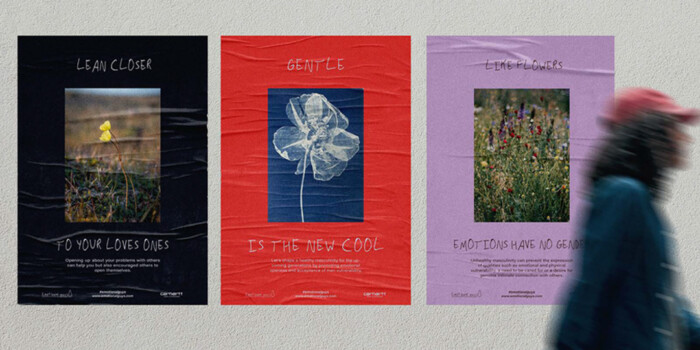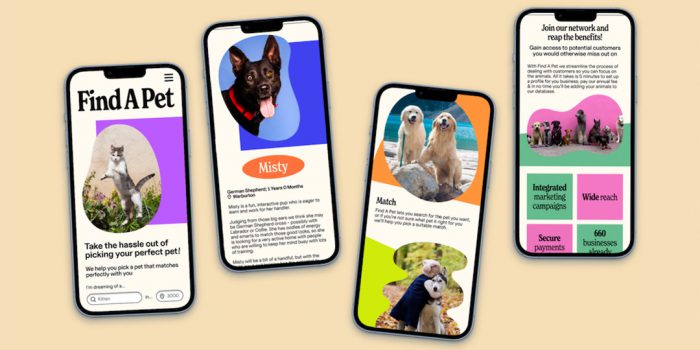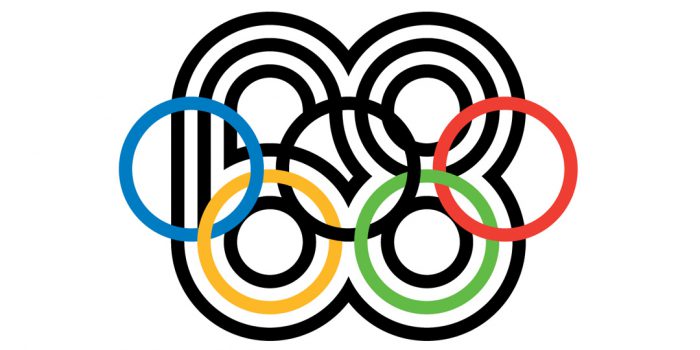Emory Douglas: A Revolutionary American Graphic Design Artist
Emory Douglas is an American graphic designer most notably known for his time as Minister of Culture for the Black Panther Party from 1967-1980 and oversaw its artistic direction of its newspaper, The Black Panther. Pivotal to the success of the movement, Douglas brought a deep understanding of design, production, printing and artistry that amplified the voice of the organization. His goal was to educate others about the issues within the community, from the perspective of the community.
Douglas grew up in the San Francisco Bay Area. He was first exposed to graphic arts during a stint at the California Youth Authority when he was a teenager. He worked in the print shop and learned printing techniques, illustration, typography and logo design. He later entered the San Francisco City College as a commercial art student. When he was 24 years old, he began working with and developing the Black Panther Party’s visual identity as the Minister of Culture and Revolutionary Artist, responsible not only for the production of The Black Panther newspaper, but also the posters and informational pieces that were disseminated throughout the community in the Bay Area, as well as throughout the country.
“We were creating a culture, a culture of resistance, a culture of defiance and self-determination.” —Emory Douglas

The Black Panther, May 4, 1968
Though resources were limited, it inspired the distinct style of imagery. The organization could only afford one color ink prints, so he strategically used black and another color to play to the strength of bold visual language, mimicking woodcut art styles with markers and pens, focusing on highly contrasted visuals and imagery. His work was daring, dynamic and courageous—both in visual approach and content. He matched a revolutionary style to a revolutionary movement, drawing on a wide array of skills such as distinct illustration, lettering, cartooning and collage.
“Initially, wherever we were set up, [usually someone’s home], that would be our production area. We used regular tables, regular lights, Elmer’s glue, rubber cement. We cut and pasted. We made up our own layout sheets. Non-repro blue markers. A lot of it was done on [an IBM Selectric] typewriter.”—Emory Douglas
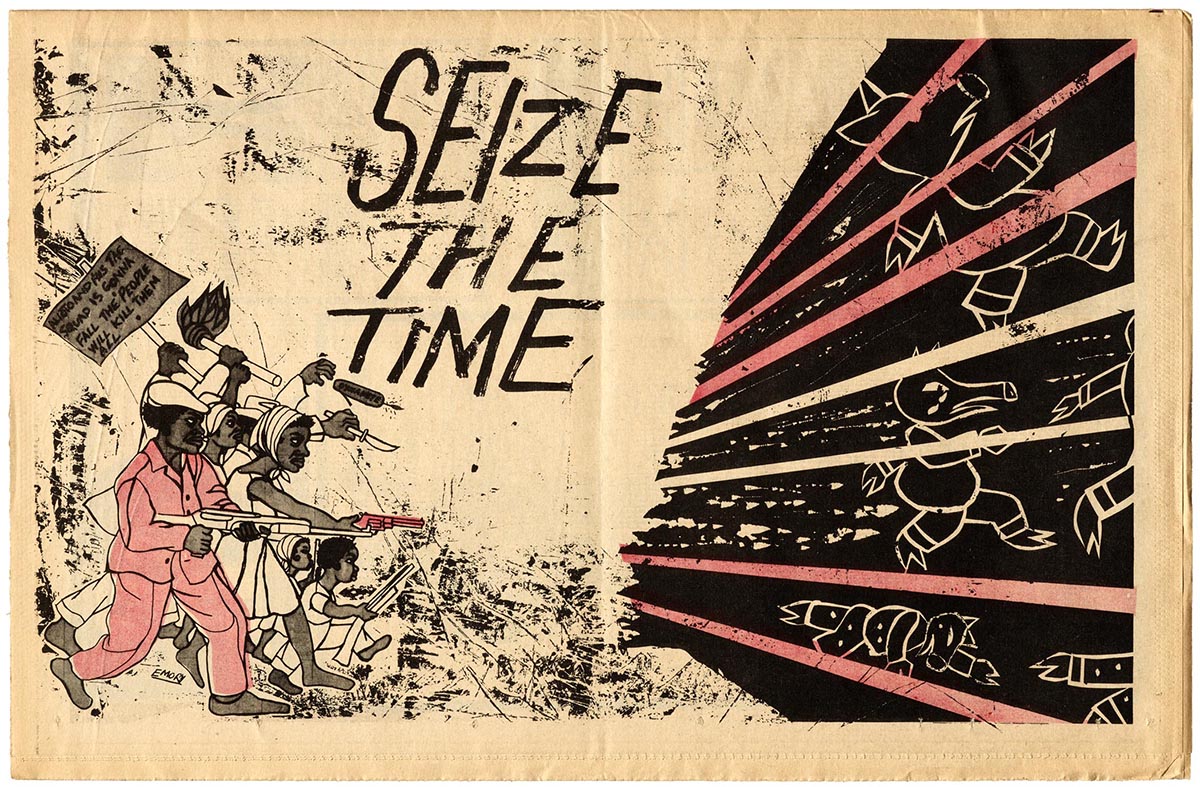
The Black Panther, September 27, 1969
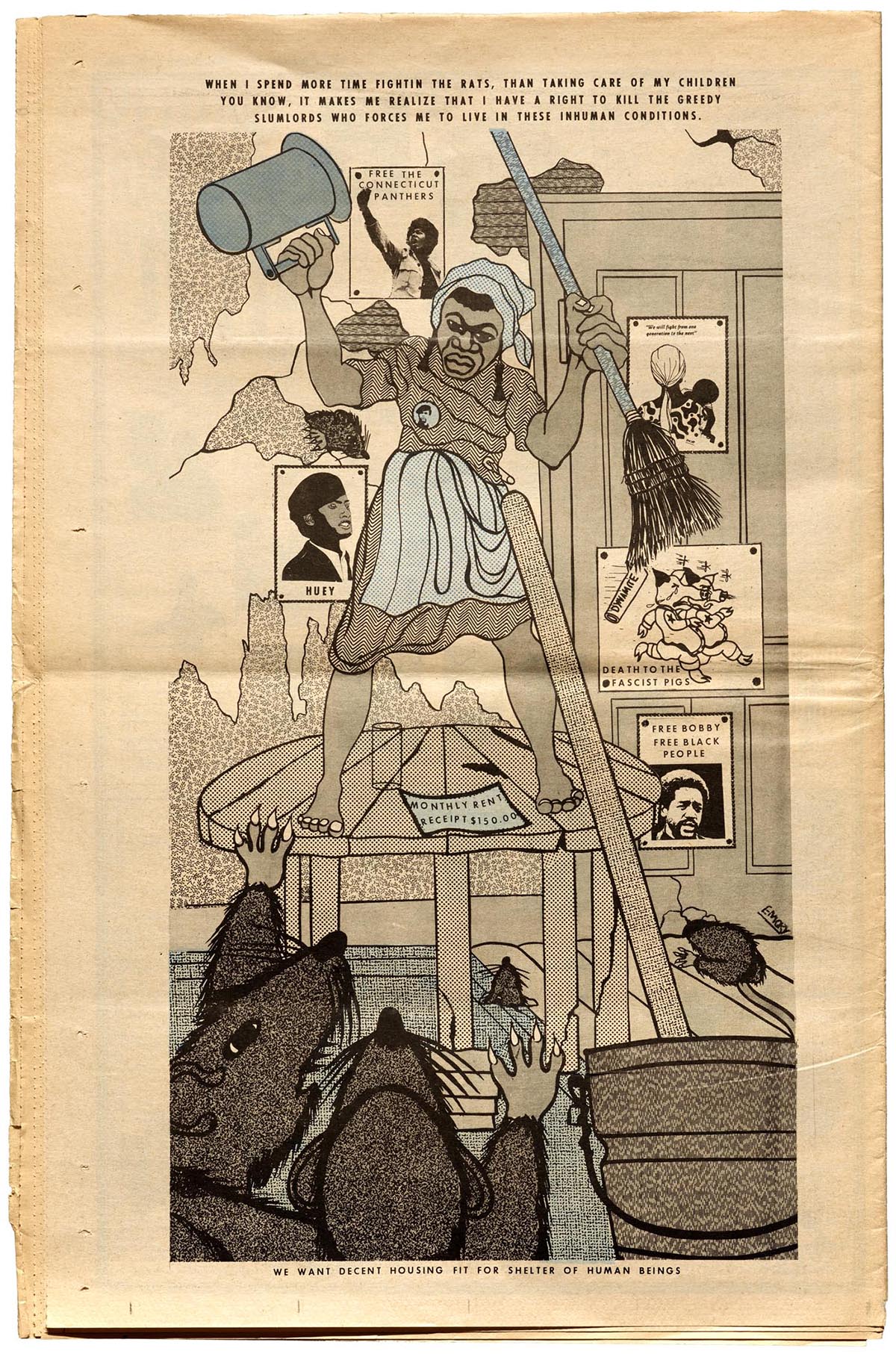
The Black Panther, July 25, 1970
In the early 70s, The Black Panther was the most widely read Black newspaper in U.S. and most widely distributed publication of any kind despite attempts to shut it down by the FBI.
Douglas brought other black artists on to contribute to the paper and mentored them. He focused on teaching others how to integrate social justice with art and design. Douglas continues to act as a mentor to this day through lectures, workshops and collaborations around the world. He has been awarded the highest honor, Honorary Doctor of Fine Arts from San Francisco Art Institute, and has had is work presented widely in exhibitions at the Museum of Contemporary Art, Los Angeles, New Museum, West Museumkwartier Museum, Tate Modern, Brooklyn Museum, de Young Museum and many others. In 2015, he received the AIGA Medal along with a video detailing his amazing contributions to social justice through graphic design.
Learn more about Emory Douglas and his works through the following resource links:
- Emory Douglas: art’s rebel without a pause
- This Just In: Emory Douglas & The Black Panther
- Design Journeys with Emory Douglas
- Fifty Years Later, Black Panthers’ Art Still Resonates
- Emory Douglas: Black Panther exhibition at The New Museum
- Douglas, Emory, Black Panther: The Revolutionary Art of Emory Douglas
Want to discover more? Take a delve into our #TBT archives and learn about some more legendary designs and designers.
Want to win some amazing prizes and stay in the loop with all things Shillington? Sign up to our newsletter to automatically go in the draw.



